Find creative and quick lunch ideas for picky eaters to try today that combine flavor and fun in every bite.
Picky eaters can turn mealtime into a daily challenge, but with a bit of creativity and ingenuity, lunchtime can become an exciting part of the day. These quick and imaginative lunch ideas ensure balanced nutrition while catering to the taste buds of even the fussiest eaters.
The Art of Crafting Picky-Eater-Friendly Lunches
Understanding what makes picky eaters tick is essential. Often, the hesitation stems from unfamiliar textures, bold flavors, or an unappealing presentation. Addressing these concerns doesn’t have to mean sacrificing nutrition. The key is to make meals visually inviting, customizable, and straightforward to eat. A vibrant plate with finger-friendly portions often entices even the most reluctant diners.
Miniature Meals: A Feast for Small Appetites
Small portions pack a big punch when thoughtfully prepared. Mini quesadillas filled with mild cheese and a whisper of seasoning or tiny sandwiches shaped with cookie cutters can delight little ones. Mini sliders with tender chicken or turkey patties are also a hit. Smaller servings make meals less overwhelming, while the bite-sized format adds an element of fun.
Hidden Nutrition: Sneaky Yet Delicious Additions
Vegetables can be a hard sell, but incorporating them cleverly into meals often does the trick. Grate zucchini or carrots into pasta sauces, add finely chopped spinach to grilled cheese sandwiches, or blend cauliflower into creamy mashed potatoes. These hidden elements deliver essential nutrients without raising alarm.
Interactive Lunch Options to Foster Engagement
When kids feel involved in their meals, they are more likely to eat with enthusiasm. DIY lunch kits, like a homemade take on a Lunchable, offer an interactive element. Provide crackers, sliced deli meats, and cheese cubes for kids to assemble on their own. Another idea is build-your-own wraps with tortillas, prepped veggies, and small portions of protein like shredded chicken or beans.
Vibrant and Playful Presentation
Colorful meals are inherently more enticing. Arrange foods in creative shapes or themes, like a rainbow of sliced fruits and vegetables or a smiley face on a plate made with rice, peas, and chicken. Bento box-style lunches with separate compartments also add visual appeal while keeping food items distinct, which many picky eaters prefer.
Sweet Yet Sensible Treats
Balance the savory elements with a touch of sweetness. Fresh fruit skewers, yogurt parfaits layered with granola, or whole-grain muffins made with mashed bananas or pumpkin add a delightful ending to any meal. These options satisfy a sweet tooth while providing valuable nutrients.
Quick and Easy Recipes for Busy Days
Speed and simplicity are crucial for parents and caregivers. Prepare egg muffin cups filled with cheese and diced vegetables, or whip up pasta salad with simple ingredients like rotini, olive oil, and cherry tomatoes. Leftovers from dinner can often be repurposed creatively, such as roasted chicken turned into a quick wrap with lettuce and a dollop of dressing.
Quick Lunch Ideas for Picky Eaters to Try Today
Table of Contents
Introduction
Feeding picky eaters is no small feat. Whether you’re a parent dealing with a child who refuses to eat anything green or an adult cooking for a loved one with selective tastes, the struggle is real. The key to success lies in creating meals that are both quick to prepare and irresistible to eat. By combining creativity with nutrition, you can turn lunch from a battleground into a joy-filled part of the day.
Understanding Picky Eaters
Why some children (and adults) are selective eaters
Selective eating often stems from a combination of sensory preferences, early food experiences, and even psychological associations. Some individuals may dislike certain textures, such as the sliminess of cooked spinach or the crunch of raw onions. For others, unfamiliarity breeds avoidance—they’re less likely to try foods they don’t recognize. Understanding these triggers is the first step in addressing picky eating behaviors.
How to cater to their preferences without compromising nutrition
Tailoring meals to picky eaters doesn’t mean sacrificing nutrition. Instead, it requires strategic planning. Start by introducing new foods alongside familiar favorites. For instance, a grilled cheese sandwich can be paired with a small serving of creamy tomato soup. Additionally, keep portions manageable to avoid overwhelming the diner, making each bite feel approachable and enjoyable.
Quick and Creative Lunch Ideas
Finger-friendly foods that appeal to picky eaters
Foods that can be eaten with fingers often win over picky eaters. Think mini sliders, chicken tenders, or small quesadilla wedges. The simplicity of handheld options eliminates the need for utensils, making meals feel more casual and fun. You can also try cutting sandwiches into playful shapes or serving fruits and veggies on skewers for added appeal.
Sneaky ways to incorporate vegetables into meals
Vegetables are often the nemesis of picky eaters, but they don’t have to be. Pureeing carrots or spinach into pasta sauces, blending zucchini into muffins, or shredding cauliflower into rice are excellent ways to add nutrients without altering the dish’s flavor profile. These subtle changes ensure picky eaters get the benefits of vegetables without noticing their presence.
Fun and interactive lunch options to keep them engaged
Interactive meals turn eating into an activity. Build-your-own tacos, customizable wraps, or snackable charcuterie boards allow picky eaters to have a say in their meals. Providing an array of choices not only encourages autonomy but also increases the likelihood they’ll eat what’s on their plate.
Planning Ahead for Stress-Free Lunchtimes
Tips for meal prepping and organizing ingredients
Preparation is the secret weapon for tackling picky eating. Dedicate a day each week to prepping ingredients like pre-washed veggies, cooked proteins, and portioned snacks. Having these ready-to-go items makes assembling quick lunches a breeze, saving time and reducing stress.
How to create a rotation of favorite recipes
Establishing a repertoire of go-to meals simplifies decision-making. Rotate between crowd-pleasers such as pasta salad, turkey pinwheels, and fruit parfaits to keep things fresh without overcomplicating the menu. Introducing slight variations, like swapping strawberries for blueberries, keeps these favorites exciting.
Understanding the Needs of Picky Eaters
Feeding a picky eater can feel like an unsolvable riddle, where every meal becomes a negotiation and every plate a battlefield. But beneath the frustration lies an opportunity to truly understand their unique preferences and behaviors. By uncovering the common reasons behind picky eating habits, such as aversions to certain textures or an aversion to unfamiliar flavors, you can begin to demystify their eating patterns.
Imagine transforming mealtime from a dreaded chore into an enjoyable experience. It starts with identifying preferences: textures, flavors, and visuals that resonate with them. Perhaps they prefer the crunch of raw carrots over the mush of cooked peas, or the vibrant presentation of a rainbow salad over a dull plate of mixed greens. These small insights can make all the difference.
The journey to better mealtimes hinges on the importance of keeping mealtime stress-free. When the pressure to eat is removed, even the most selective eaters can begin to explore and enjoy food on their terms. Understanding their needs isn’t just about the food—it’s about fostering a positive, nurturing environment where exploration and enjoyment go hand in hand. Let’s make every bite a step toward connection and nutrition.
Quick and Nutritious Lunch Options
Simple Wraps and Roll-Ups with Customizable Fillings
Wraps and roll-ups are among the most versatile lunch options available. Not only are they simple to make, but they also allow for endless customization, ensuring that even the pickiest eaters will find a combination they love. The beauty of wraps lies in their ability to serve as a canvas, with endless possibilities for healthy fillings.
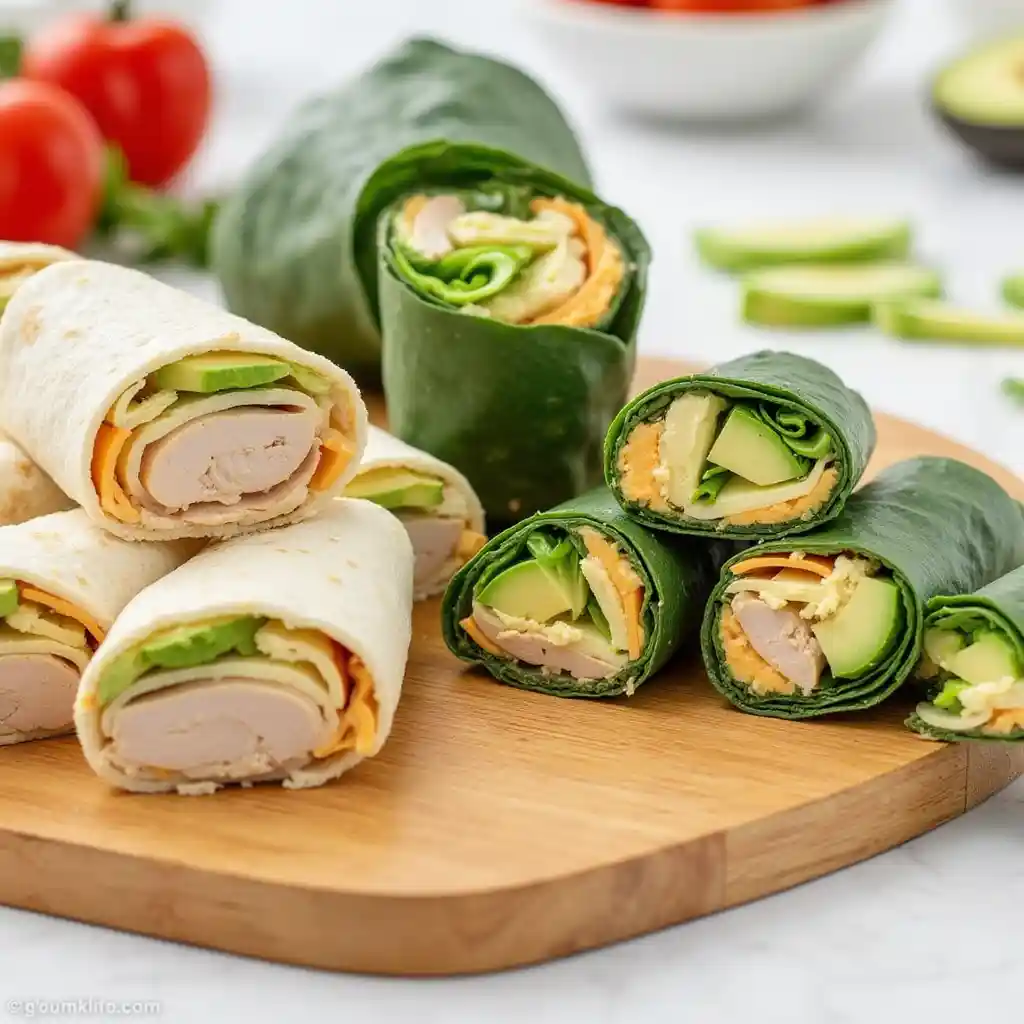
Ingredients for Wraps and Roll-Ups:
A typical wrap might include a whole wheat or spinach tortilla, lean proteins like chicken or turkey, fresh veggies such as lettuce, spinach, or bell peppers, and a spread like hummus or guacamole. You can opt for dairy-free options, or add cheese for those who prefer a creamier texture. Wraps also make it easy to sneak in a variety of vitamins and minerals without overwhelming the eater.
These handheld meals are incredibly flexible, allowing for diverse flavor combinations. Whether it’s a simple turkey and cheese roll-up for kids or a more complex grilled chicken Caesar wrap, the possibilities are endless. To make things even easier, consider prepping the wraps the night before, ensuring a quick, grab-and-go solution in the morning.
| Wrap Type | Fillings | Benefits |
|---|---|---|
| Classic Chicken Wrap | Grilled chicken, spinach, avocado, hummus | High in protein, heart-healthy fats |
| Veggie Delight Wrap | Lettuce, carrots, cucumber, avocado, hummus | Low calorie, fiber-rich, refreshing |
| Turkey & Cheese Wrap | Sliced turkey, cheddar, lettuce, mustard | High in protein, satisfying, easy to make |
Mini-Sized Meals That Pack a Punch
Mini-sized meals are perfect for those who prefer smaller portions or want to try a variety of flavors in one sitting. These meals are particularly appealing to children or adults who find larger portions overwhelming. They can be as simple as mini sandwiches or as complex as bite-sized frittatas or mini quiches, offering endless options to suit every taste.
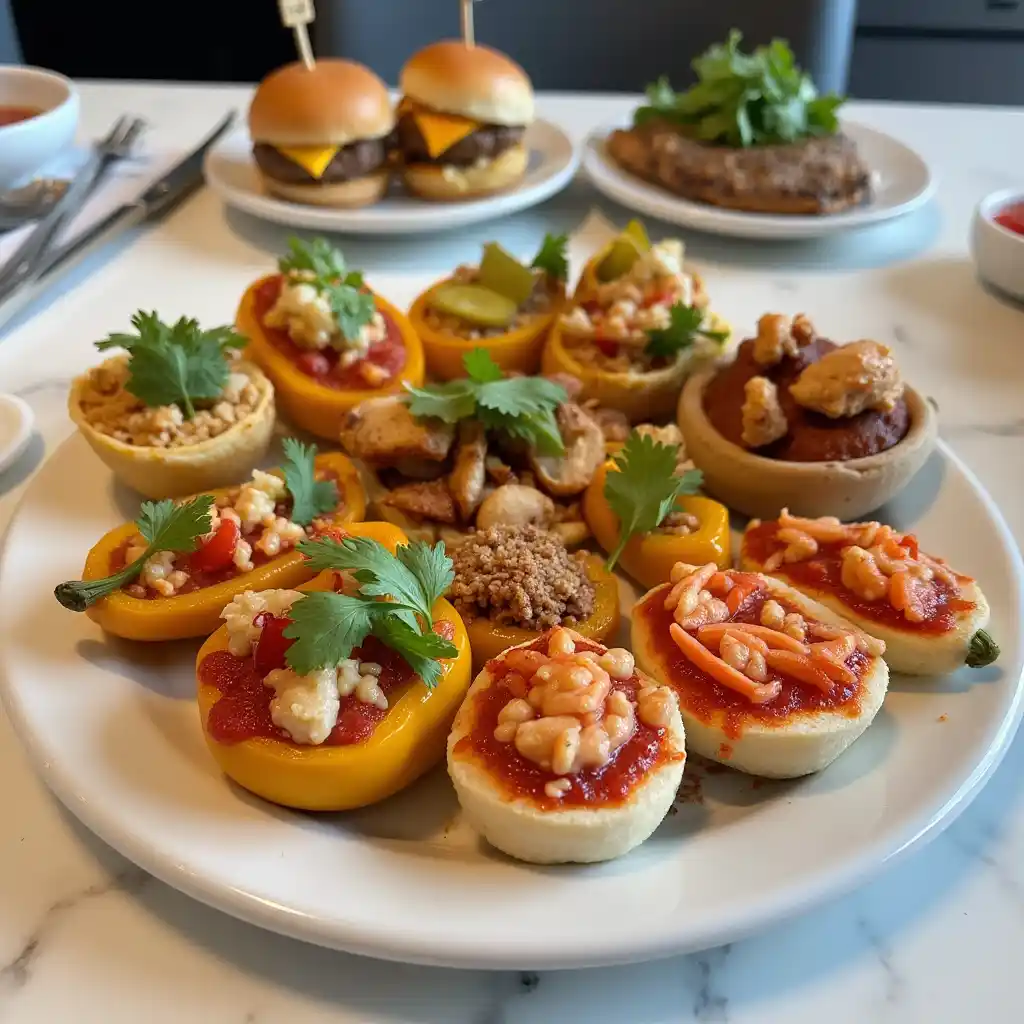
Mini meals provide the flexibility to mix and match different ingredients without committing to one large dish. These bite-sized versions of full meals can incorporate whole grains, lean proteins, and colorful vegetables, providing a well-balanced mix of nutrients. By preparing these mini meals in advance, you ensure that lunch remains both nutritious and satisfying, with minimal effort required on busy days.
Some popular mini-sized meals include:
- Mini Quiches: Loaded with veggies and protein, these bite-sized treats are perfect for a quick lunch or snack. They can be baked in muffin tins and stored in the refrigerator for several days.
- Mini Sandwiches: Using whole grain bread, lean meats, and a touch of mustard or avocado for extra flavor, mini sandwiches are a great way to introduce healthy choices in a fun, bite-sized form.
- Mini Pancakes with Yogurt: For a sweeter twist, mini pancakes served with a side of Greek yogurt and berries provide a filling and nutritious lunch that is both delicious and fun.
| Mini Meal Type | Ingredients | Benefits |
|---|---|---|
| Mini Quiches | Eggs, spinach, mushrooms, feta cheese | Protein-rich, veggie-packed, easy to prep |
| Mini Sandwiches | Whole grain bread, turkey, cheese, avocado | High in fiber, lean protein, heart-healthy fats |
| Mini Pancakes with Yogurt | Whole wheat flour, Greek yogurt, berries | Antioxidant-rich, calcium-packed |
Protein-Packed Options That Are Easy to Eat
When it comes to packing a punch in terms of nutrition, protein should always be a priority. Protein helps with muscle repair, keeps you full longer, and plays an essential role in maintaining healthy body function. However, preparing protein-packed meals doesn’t have to be complicated or time-consuming.
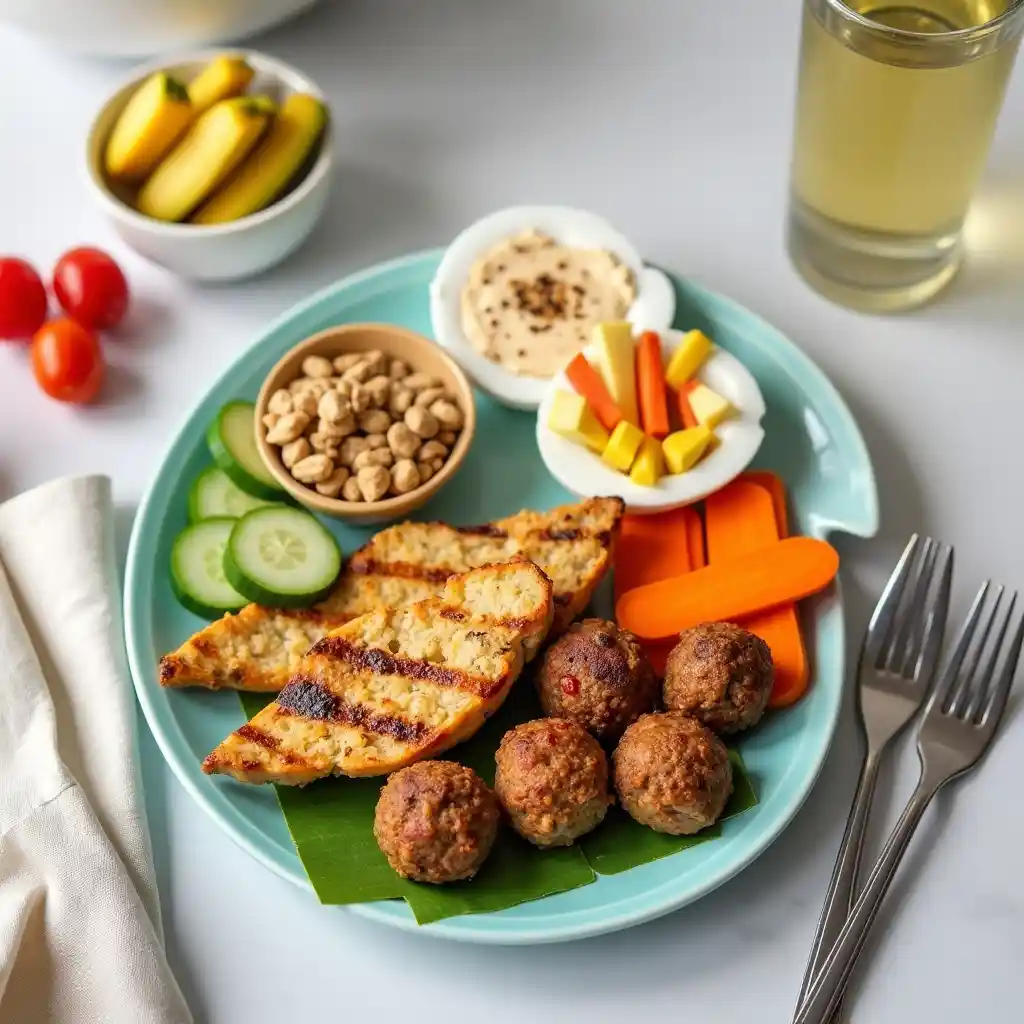
Easy-to-Eat Protein Options:
Consider creating a protein bowl—a quick and customizable option that combines protein sources like grilled chicken, tofu, or quinoa with nutrient-dense vegetables and healthy fats. Adding a delicious dressing or sauce on top can elevate the flavors. Alternatively, protein-rich salads made with ingredients like hard-boiled eggs, chickpeas, or grilled chicken, tossed with fresh veggies and a light vinaigrette, make for a satisfying and nutritious lunch.
Another quick option is protein-packed smoothies. Blending Greek yogurt with fruits, spinach, and protein powder offers a satisfying meal that can be consumed on the go. These smoothies can easily be packed with fiber, vitamins, and minerals, ensuring you get a nutrient-dense lunch with minimal effort.
For a more substantial meal, protein-packed snack boxes are perfect. Pack a lunchbox with a mix of boiled eggs, roasted chickpeas, cheese, and a small handful of nuts to create a filling and easy-to-eat lunch. These meals require no cooking and can be assembled in minutes.
| Protein-Packed Option | Ingredients | Benefits |
|---|---|---|
| Protein Bowl | Grilled chicken, quinoa, avocado, spinach | High in protein, fiber-rich, customizable |
| Protein-Rich Salad | Hard-boiled eggs, chickpeas, mixed greens, olive oil | Packed with protein, low-carb, heart-healthy |
| Protein Smoothie | Greek yogurt, spinach, banana, protein powder | Rich in protein, vitamin-packed, quick meal |
| Protein Snack Box | Boiled eggs, roasted chickpeas, cheese, nuts | Filling, easy to assemble, high in protein |
Creative Ways to Include Vegetables
Incorporating vegetables into meals can be a challenging task, especially when cooking for picky eaters. However, vegetables are essential to a balanced diet, offering crucial nutrients like fiber, vitamins, and antioxidants. By thinking outside the box and using creative methods, it’s possible to make vegetables both fun and appealing, ensuring that everyone enjoys them. From sneaky blends in sauces and soups to fun shapes and flavors, there are countless ways to get more veggies onto the plate without resistance.
Sneaky Veggie Blends: Sauces, Soups, and Dips
One of the most effective ways to incorporate vegetables into meals is by blending them into sauces, soups, or dips. The idea is to hide the vegetables in familiar and flavorful dishes, masking their texture and taste while still providing all the health benefits. This approach works wonders for picky eaters who refuse to eat veggies in their raw or whole form.
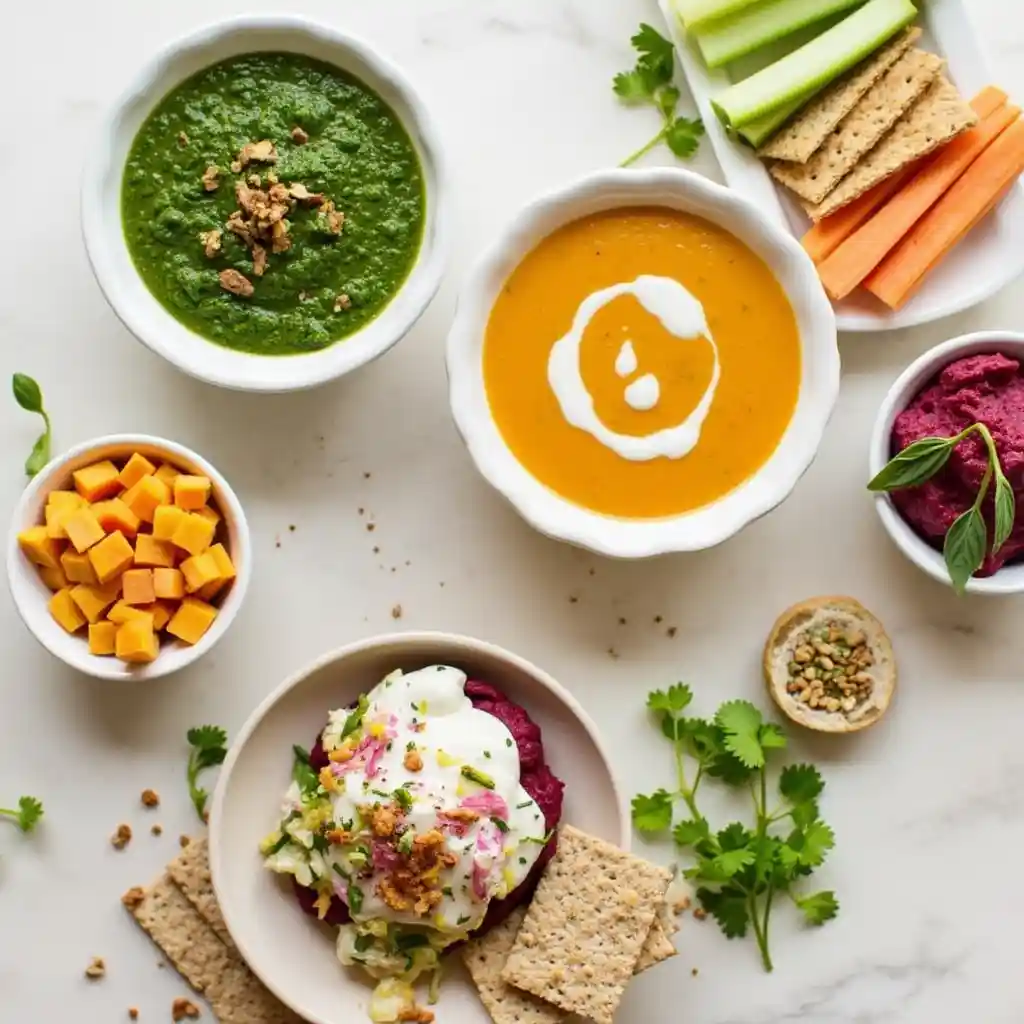
Vegetable-Packed Sauces:
Tomato sauce is a staple in many households, and it’s incredibly easy to enhance it with extra vegetables. By adding finely grated carrots, zucchini, or bell peppers to tomato sauce, you can increase the nutritional value without altering the flavor. For pasta dishes, stir in pureed spinach or kale into your favorite marinara for an extra boost of greens.
Soups that Hide Veggies:
Soups are another excellent vehicle for hiding vegetables. Whether it’s a creamy butternut squash soup or a classic vegetable puree, blending vegetables into a smooth, comforting soup ensures that picky eaters are consuming essential nutrients without feeling overwhelmed. You can also add cauliflower, sweet potatoes, or peas into a soup base for added thickness and nutrition.
Veggie-Infused Dips:
Dips are a fantastic way to introduce vegetables subtly. A classic example is hummus, which can be made even more nutritious by adding pureed roasted red peppers or carrots. Similarly, guacamole can be enhanced with finely chopped spinach or peas. These dips can be served with veggie sticks, crackers, or spread on sandwiches, making them a versatile and easy way to sneak in extra vegetables.
| Dish Type | Veggie Additions | Benefits |
|---|---|---|
| Tomato Sauce | Grated carrots, zucchini, spinach, bell peppers | Enhances flavor, adds fiber and vitamins |
| Vegetable Soup | Pureed cauliflower, sweet potato, peas | High in fiber, provides antioxidants |
| Hummus | Roasted red peppers, carrots, spinach | Packed with healthy fats, fiber-rich, easy to eat |
Fun Shapes and Arrangements to Make Veggies Appealing
When it comes to kids (and adults) who are reluctant to eat their greens, presentation can make all the difference. Making vegetables visually appealing through fun shapes and creative arrangements can encourage even the pickiest eaters to try something new. By incorporating playful designs into meals, you’re turning vegetables from something to be avoided into a source of curiosity.
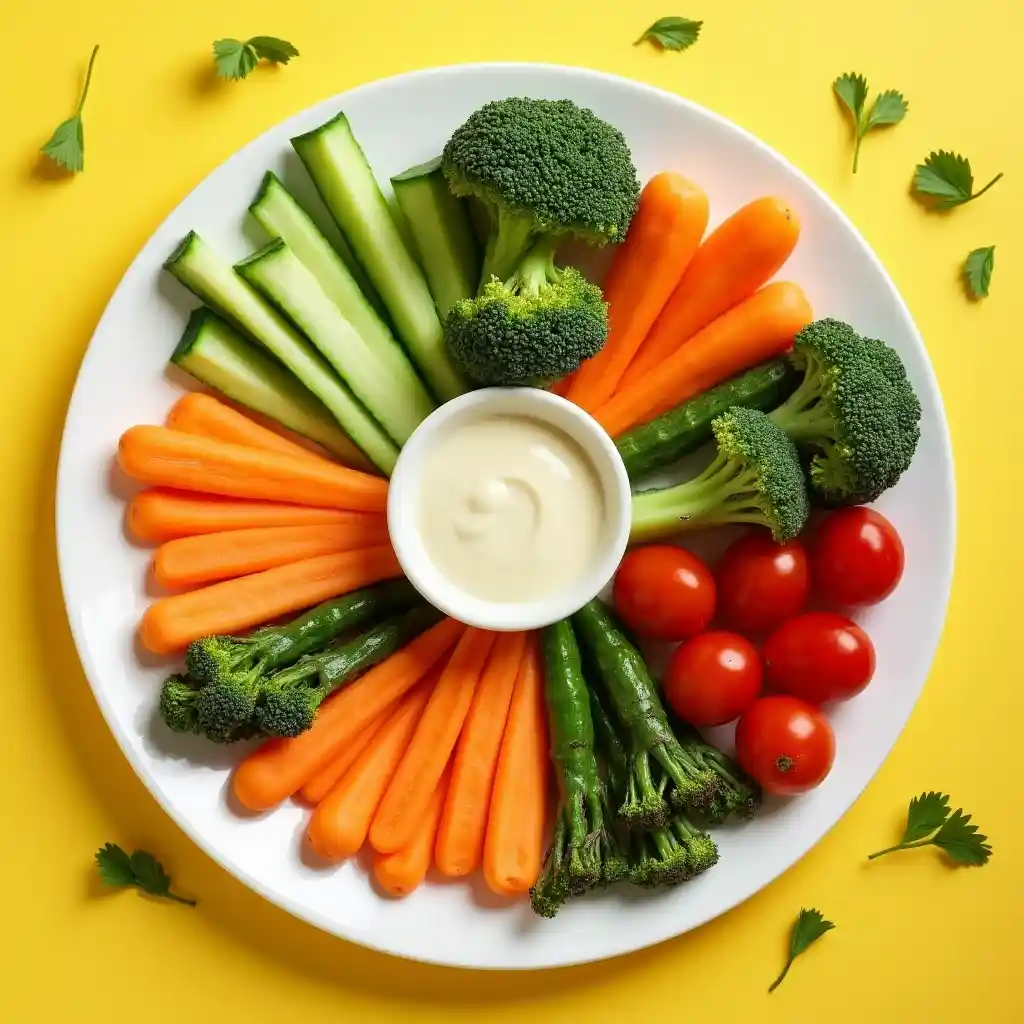
Veggie Cutouts:
Using cookie cutters to shape vegetables into stars, hearts, or animal shapes can transform ordinary carrots, cucumbers, or sweet potatoes into a fun and exciting snack. A plate of sliced veggies shaped like a smiley face or a flower can spark interest and make mealtime a bit more engaging. The same approach can be used with fruits, too, to create an aesthetically pleasing and colorful plate.
Veggie Art:
Another fun way to serve vegetables is by turning them into art. Arrange slices of cucumbers, peppers, and cherry tomatoes to form pictures or patterns on the plate. This method works particularly well with children, as it engages them in a tactile, creative process. Allowing them to “build” their vegetable art before eating can make the experience feel like a fun activity rather than a chore.
Colorful Veggie Displays:
Mixing different colored vegetables to create a rainbow effect can make the plate look more enticing. A salad of purple cabbage, bright red peppers, orange carrots, and green spinach can become a feast for the eyes. The diversity of colors not only enhances the plate’s appearance but also ensures a variety of nutrients, as each color signifies different vitamins and minerals.
| Veggie Presentation | Method | Benefits |
|---|---|---|
| Veggie Cutouts | Cookie cutters for fun shapes | Increases excitement and engagement |
| Veggie Art | Creative arrangements, pictures | Engages kids and encourages consumption |
| Colorful Displays | Rainbow of different colored veggies | Visually stimulating, nutrient-rich |
Pairing Vegetables with Familiar Flavors
For many picky eaters, the key to making vegetables palatable is pairing them with familiar, comforting flavors. By combining veggies with ingredients that are already loved, it’s easier to mask the taste of vegetables while still reaping their nutritional benefits.
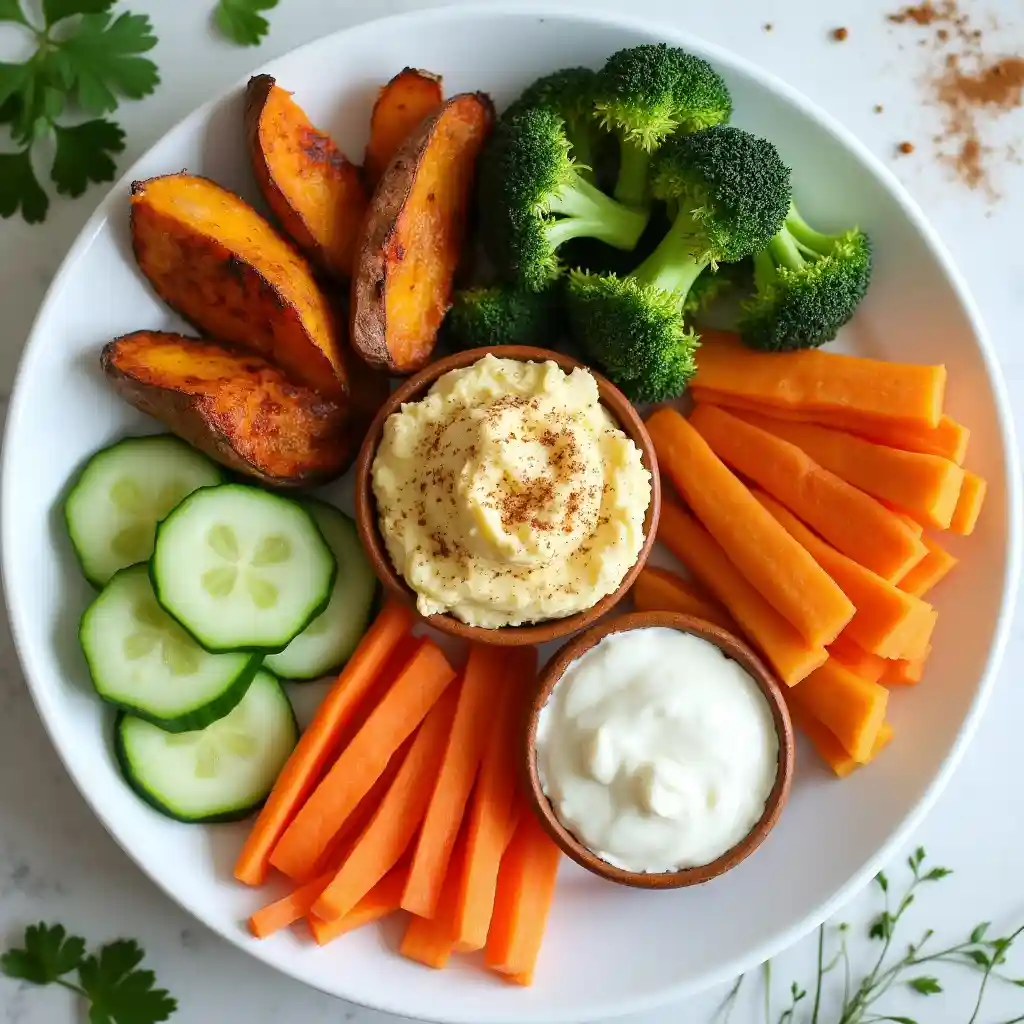
Cheese and Veggies:
Cheese is one of the best flavor pairings for vegetables. Whether it’s melting cheese over roasted cauliflower, mixing cheese into mashed potatoes, or adding a sprinkle of Parmesan on steamed broccoli, the creamy, savory qualities of cheese make vegetables more inviting. For extra flavor, try adding garlic or a dash of herbs like thyme or oregano.
Veggies with Sweet and Savory Sauces:
Many vegetables can be paired with sweet or savory sauces to balance out their flavors. A simple drizzle of honey or maple syrup can make roasted Brussels sprouts or carrots more enjoyable for those who prefer sweeter tastes. On the savory side, a splash of soy sauce or balsamic glaze on roasted or stir-fried vegetables can elevate the flavor and make them more palatable.
Veggie Smoothies:
Blending vegetables into smoothies is another fantastic way to introduce them into the diet without overwhelming the taste buds. By pairing leafy greens like spinach or kale with fruits such as bananas, strawberries, or apples, you create a naturally sweet and nutrient-packed drink. A touch of Greek yogurt or almond milk adds creaminess, masking any strong veggie flavors while maintaining their nutritional content.
| Veggie Pairing | Flavor Combinations | Benefits |
|---|---|---|
| Cheese & Veggies | Broccoli with cheddar, cauliflower with Parmesan | Enhances flavor, provides protein and calcium |
| Sweet & Savory Sauces | Brussels sprouts with honey, carrots with maple syrup | Adds sweetness, balances bitter flavors |
| Veggie Smoothies | Spinach with banana, kale with apple and strawberry | Sweetens taste, nutrient-dense, easy to drink |
Interactive Lunch Ideas for Maximum Engagement
Incorporating interactive elements into mealtime is a fantastic way to make lunch more exciting and engaging, especially for kids. Interactive lunch ideas foster creativity, independence, and can transform mealtime into a fun, hands-on experience. Whether it’s a DIY lunch kit, a build-your-own sandwich station, or a bento box filled with a variety of options, these concepts not only make eating more enjoyable but also encourage healthy choices. Here are some innovative and interactive lunch ideas that can elevate your lunchtime routine while keeping things nutritious.
DIY Lunch Kits for Kids to Assemble Their Meals
DIY lunch kits are an exciting way to let kids take control of their mealtime. The concept is simple: gather all the ingredients for a meal, package them separately, and allow kids to assemble their lunch according to their preferences. This type of hands-on experience not only encourages creativity but also helps kids develop an understanding of portion control and food choices. Additionally, it’s an excellent opportunity to introduce them to new ingredients in a non-intimidating way.
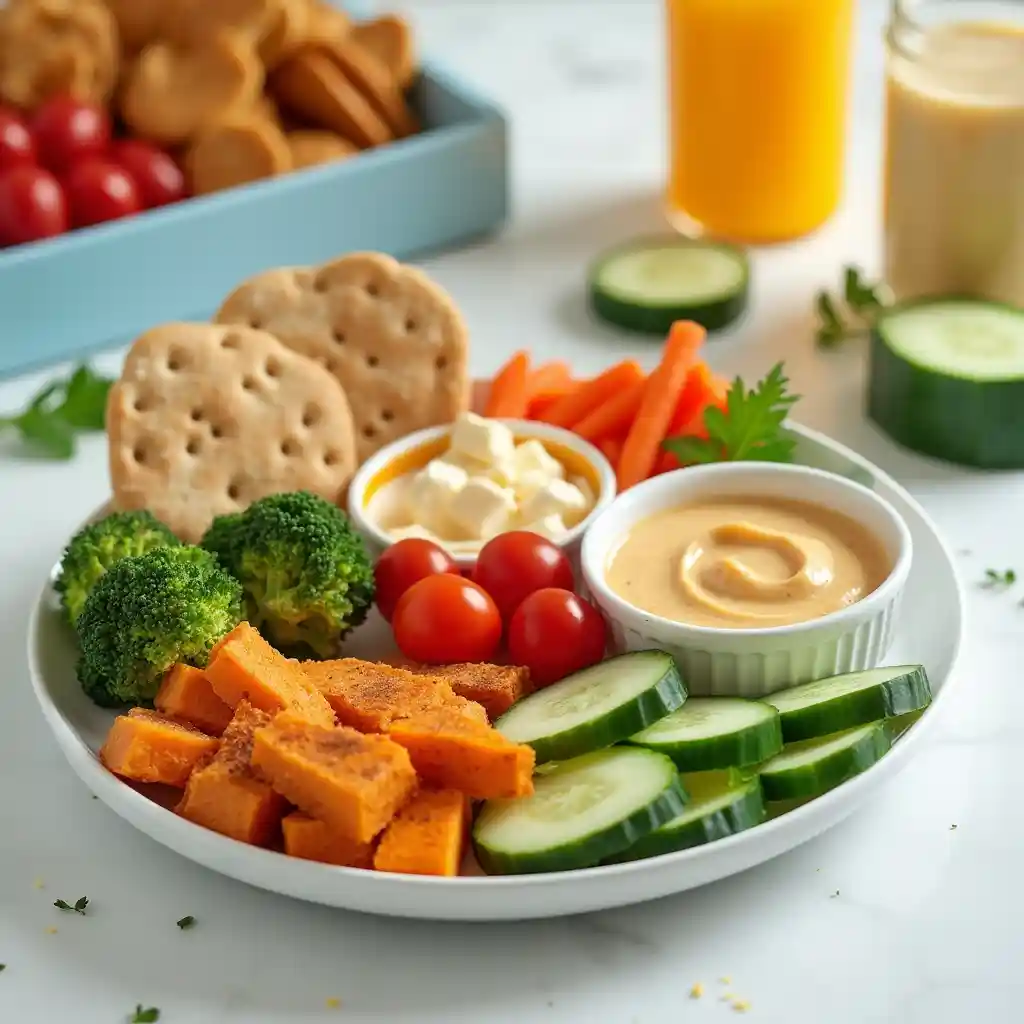
Essential Components for DIY Lunch Kits:
- Proteins: Grilled chicken strips, turkey slices, boiled eggs, or even hummus.
- Vegetables: Carrot sticks, cucumber slices, bell pepper strips, or cherry tomatoes.
- Carbs: Whole-grain pita pockets, wraps, or small sandwich buns.
- Cheese: Sliced cheese or cheese cubes, offering both flavor and calcium.
- Condiments: Packs of ranch dressing, guacamole, or honey mustard for dipping.
By presenting the ingredients in separate containers or compartments, kids can mix and match to create their ideal meal. This encourages both autonomy and healthy eating habits. Whether they opt for a veggie-packed wrap or a protein-loaded sandwich, the power is in their hands, making lunchtime an enjoyable and educational experience.
| DIY Kit Components | Examples | Benefits |
|---|---|---|
| Proteins | Grilled chicken, boiled eggs, turkey slices | Builds muscle, energy-boosting |
| Vegetables | Carrot sticks, cucumber slices, bell peppers | Rich in fiber, supports digestion |
| Carbs | Whole grain pita, sandwich buns, wraps | Provides energy, complex carbohydrates |
| Cheese | Sliced cheese, cheese cubes | Source of calcium, satisfying texture |
| Condiments | Ranch dressing, guacamole, mustard | Adds flavor, customizable choices |
Build-Your-Own Sandwiches and Wraps
Building sandwiches and wraps allows for infinite combinations, ensuring everyone finds a flavor that suits their taste. This interactive meal idea is ideal for all ages and can be customized to meet any dietary requirement. From classic turkey and cheese wraps to more adventurous combinations like hummus, avocado, and roasted vegetables, the possibilities are endless. By setting up a “sandwich bar” with a variety of fillings, spreads, and toppings, each person can craft their ideal sandwich or wrap to their exact liking.
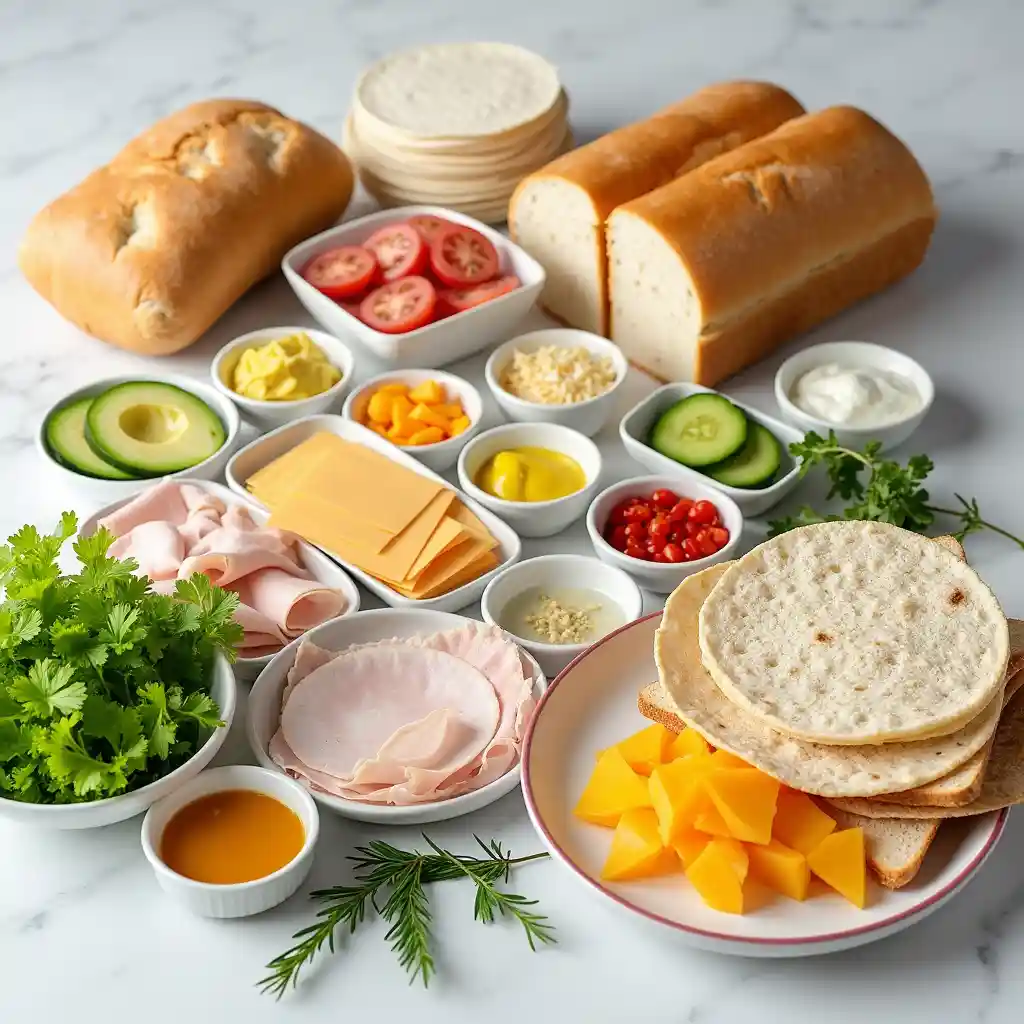
Key Components for Sandwich and Wrap Building:
- Breads and Wraps: Whole wheat bread, multigrain bread, tortillas, or lettuce leaves for a low-carb option.
- Proteins: Deli meats, grilled chicken, tuna salad, tofu, or hummus for a vegetarian option.
- Vegetables: Leafy greens, cucumbers, tomatoes, onions, bell peppers, or sprouts.
- Spreads: Mayonnaise, mustard, pesto, or hummus.
- Cheese: Cheddar, Swiss, mozzarella, or vegan cheese.
Encouraging kids and adults alike to build their own sandwiches or wraps provides an excellent opportunity to incorporate new ingredients and expand taste preferences. The customization process allows for healthy choices while still offering fun, hands-on interaction with food. Additionally, it’s a great way to cater to everyone’s specific tastes, making it the perfect lunch option for families with varying preferences.
| Sandwich/Wrap Components | Examples | Benefits |
|---|---|---|
| Breads and Wraps | Whole wheat, multigrain, tortillas | High in fiber, energy-boosting |
| Proteins | Grilled chicken, tuna salad, hummus | Builds muscle, rich in protein |
| Vegetables | Leafy greens, cucumbers, bell peppers | Nutrient-dense, rich in fiber |
| Spreads | Mayonnaise, mustard, pesto, hummus | Adds flavor, heart-healthy fats |
| Cheese | Cheddar, mozzarella, Swiss | Rich in calcium, satisfying |
Bento Box Inspirations with Compartmentalized Choices
The bento box is a time-tested, interactive lunch solution that originated in Japan and has since gained popularity worldwide. Bento boxes typically feature multiple small compartments that can be filled with a variety of foods, allowing for a well-balanced and visually appealing meal. This type of lunch is perfect for those who enjoy having multiple food options and appreciate variety in their meals.
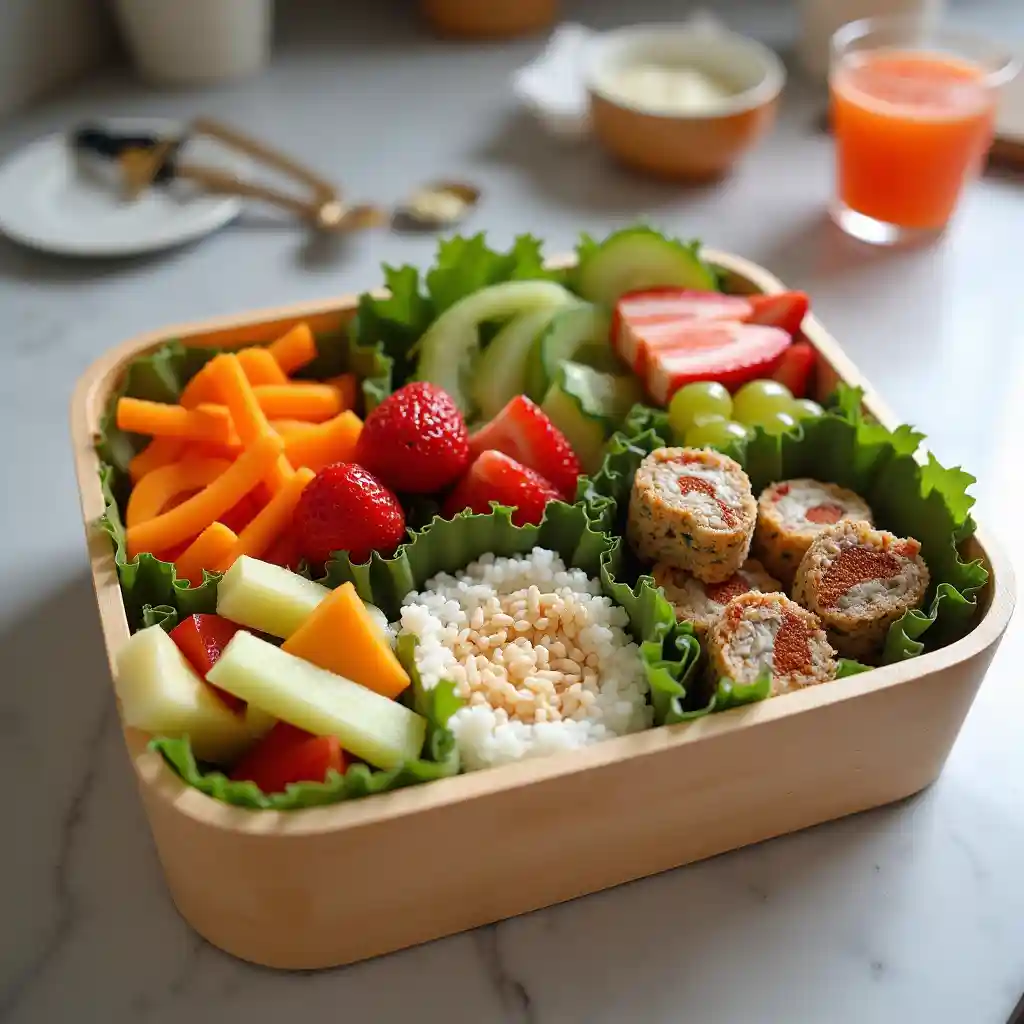
How to Create an Engaging Bento Box:
- Grains and Carbs: Include small servings of rice, quinoa, or even mini sandwiches. Rice balls or onigiri (Japanese rice dumplings) also work well as a base.
- Proteins: Add hard-boiled eggs, grilled chicken, tofu, or small meatballs. A variety of proteins ensures that every nutrient is covered.
- Vegetables: Colorful and crunchy veggies like carrots, snap peas, cherry tomatoes, or pickled radishes. These add essential vitamins and antioxidants.
- Fruits: Fresh fruits like apple slices, berries, grapes, or melon not only complement the meal but also provide a sweet and healthy finishing touch.
- Snacks: A small compartment for nuts, seeds, or a small portion of crackers rounds out the meal with a satisfying crunch.
The beauty of bento boxes lies in their compartmentalization, which encourages kids (and adults) to eat a balanced meal with a little of everything. It also provides a great opportunity to experiment with new foods and present them in a way that is fun and engaging. Additionally, bento boxes are perfect for portion control, making them a healthy and practical option for busy lunches.
| Bento Box Components | Examples | Benefits |
|---|---|---|
| Grains and Carbs | Rice balls, quinoa, mini sandwiches | Provides energy, rich in carbohydrates |
| Proteins | Grilled chicken, hard-boiled eggs, tofu | Builds muscle, high in protein |
| Vegetables | Carrot sticks, snap peas, cherry tomatoes | Rich in vitamins, antioxidants |
| Fruits | Apples, berries, grapes, melon | High in fiber, boosts immunity |
| Snacks | Nuts, seeds, crackers | Provides crunch, healthy fats |
Making Meals Visually Appealing
Meals that are visually appealing can engage the senses and make mealtime more enjoyable, especially for picky eaters. Creating a visually exciting plate not only enhances the eating experience but also stimulates appetite and encourages healthier eating habits. By using vibrant colors, fun food art, and unique presentation techniques, meals can be transformed from mundane to extraordinary. This approach is especially effective when trying to introduce new foods or when aiming to make mealtime more engaging for children and adults alike.
Using Vibrant Colors to Catch Attention
Colors are more than just a visual appeal—they are an essential aspect of food’s nutritional value. Vibrant, colorful meals often indicate a range of nutrients, each representing different vitamins, antioxidants, and minerals. For instance, red bell peppers, spinach, carrots, and blueberries are all rich in compounds that promote health. Incorporating a variety of colors into a meal can not only make it more visually stimulating but also ensure a diverse nutrient intake.
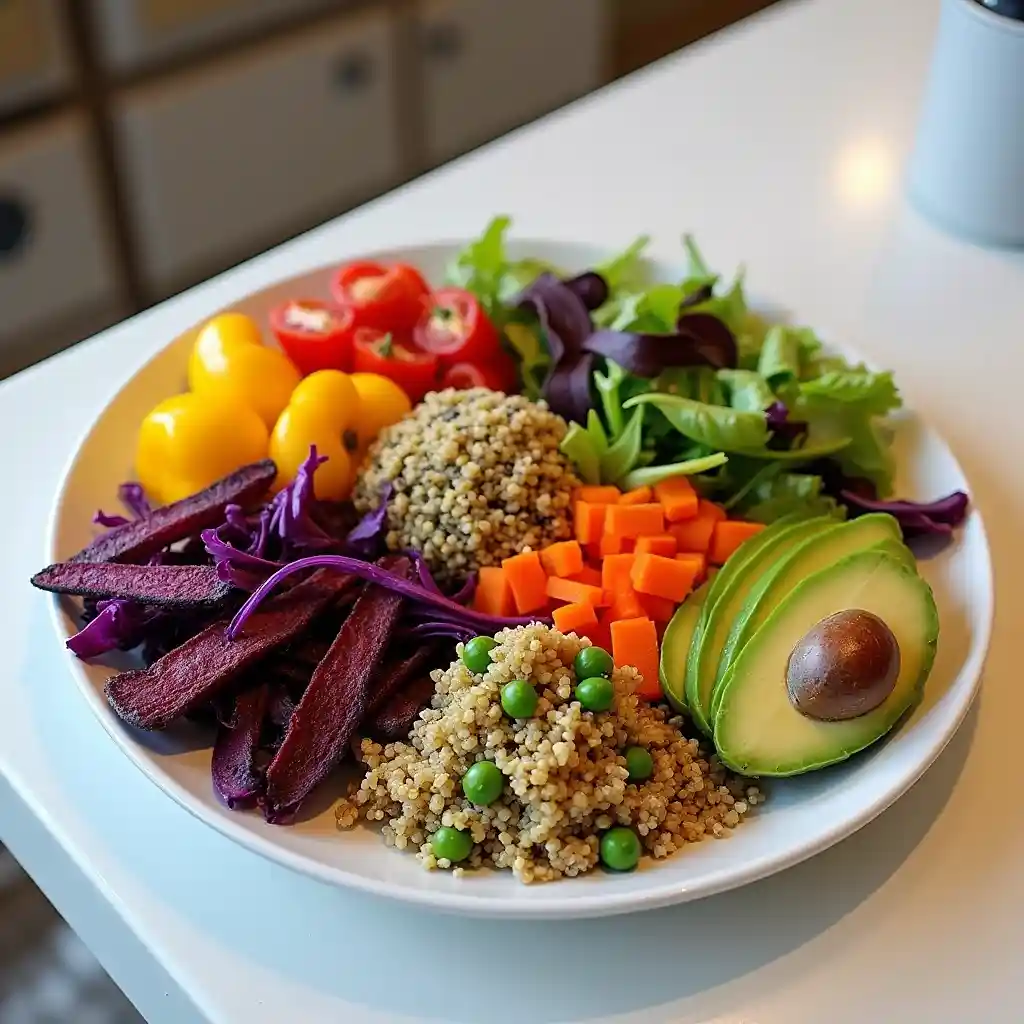
How to Use Color Effectively:
- Leafy Greens: Add spinach, kale, or lettuce to any dish for a fresh, vibrant green. These vegetables are rich in fiber and iron and create a beautiful contrast with other colors.
- Bright Fruits and Vegetables: Tomatoes, red peppers, carrots, and yellow squash bring bold, energetic colors to the plate while providing vitamins like A, C, and K.
- Berries and Citrus: Adding blueberries, strawberries, or orange slices can introduce pops of color and sweetness to salads, desserts, or snacks.
- Purple and Blue Foods: Vegetables like eggplant and purple cabbage, as well as fruits like plums, offer rich, deep hues that indicate high levels of antioxidants.
Incorporating these colors into salads, sandwiches, or even as garnishes on soups and main courses ensures that the meal doesn’t just look appealing but is also packed with nutrients. The simple act of using multiple vibrant colors makes the meal look fresh, appetizing, and well-balanced.
| Color | Foods | Benefits |
|---|---|---|
| Green | Spinach, kale, lettuce | High in fiber, rich in iron and calcium |
| Red | Tomatoes, red peppers, strawberries | Rich in vitamin C and antioxidants |
| Yellow | Carrots, squash, corn | Packed with beta-carotene, supports vision |
| Blue/Purple | Eggplant, blueberries, purple cabbage | High in antioxidants, anti-inflammatory properties |
| Orange | Oranges, bell peppers, sweet potatoes | Boosts immunity, vitamin C rich |
Fun Food Art: Animals, Shapes, and Themes
Turning food into art can make meals both visually interesting and engaging. For children, food art can encourage them to eat more vegetables, fruits, and other nutritious ingredients. By arranging food into animals, shapes, or fun thematic designs, parents and chefs can create a sense of wonder and excitement. This also serves as a great opportunity for creativity and playfulness during mealtime, making it feel less like a chore and more like an enjoyable activity.
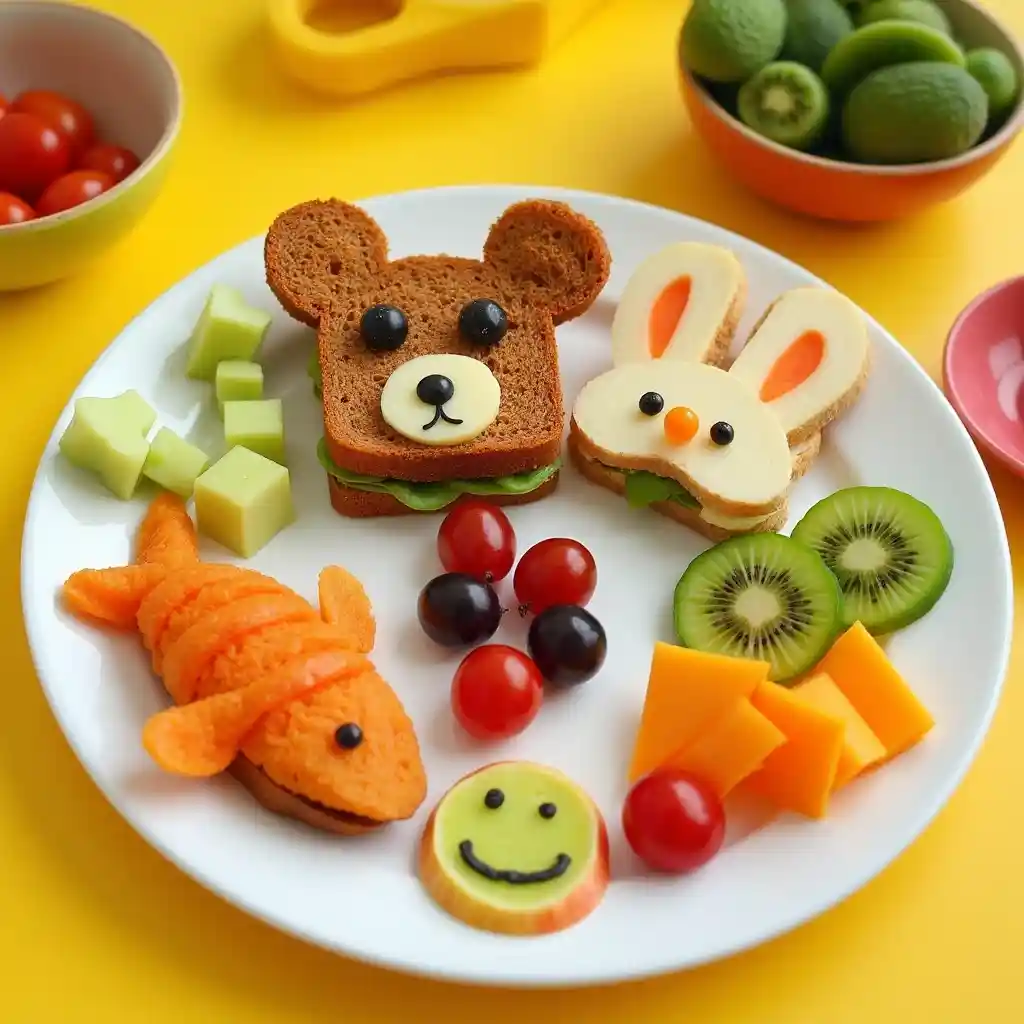
Ideas for Fun Food Art:
- Animal Shapes: Use fruits, vegetables, and other ingredients to craft animal faces or figures. For instance, an apple slice for the body, blueberries for eyes, and a banana for the tail could create a simple animal-themed meal.
- Themed Plates: You could arrange foods to form specific themes like a smiling sun, a flower, or a fish. The diversity of shapes will make the food more fun to eat while encouraging exploration of new ingredients.
- Fruit and Veggie Sculptures: Carving vegetables and fruits into creative shapes, such as flowers, hearts, or stars, can turn even a simple salad or sandwich into an edible masterpiece.
This type of food presentation not only appeals to the eyes but also taps into the natural curiosity and creativity of kids. It can be especially effective in encouraging them to try new foods by making them feel like they are participating in a fun, hands-on activity rather than just eating a meal.
| Food Art Idea | Example | Benefits |
|---|---|---|
| Animal Shapes | Banana for tails, apple slices for bodies | Encourages vegetable consumption, fun for kids |
| Themed Plates | Sun, flower, or fish made from fruits | Stimulates creativity, encourages new food experiences |
| Fruit & Veggie Sculptures | Star-shaped cucumbers, flower carrots | Enhances creativity, makes meals appealing |
Utilizing Unique Containers and Presentation Styles
The container or vessel used to serve a meal can have a significant impact on its overall presentation. Unique containers not only make the meal more visually striking but also help organize the food, making it more inviting to eat. A creatively styled plate or an unusual serving dish can transform even the simplest of meals into a culinary experience.

Creative Container Ideas:
- Bento Boxes: These compartmentalized containers allow for a variety of foods to be served in a neat, organized manner. Their separate sections help maintain the distinct textures and flavors of each dish while giving the meal a visually appealing structure.
- Miniature Containers: Small containers like mason jars or tiny bowls can add a playful aspect to the meal. For example, using individual jars for salads, parfaits, or layered dips adds an element of fun and presentation.
- Edible Plates or Cups: Think outside the box by serving food in edible cups made from vegetables or baked goods. For instance, a taco salad could be served inside a crunchy taco shell, or a dessert parfait could be presented in a cookie cup.
- Unusual Plates and Bowls: Try using colorful, quirky plates or themed dinnerware (such as plates shaped like animals, cars, or flowers) to make the meal more exciting for children.
By using creative containers, the meal becomes not just food but an interactive experience. Serving meals in a unique way not only piques curiosity but also ensures that the meal is memorable and engaging, sparking interest in trying new foods and enjoying the eating process.
| Container Style | Examples | Benefits |
|---|---|---|
| Bento Boxes | Compartmentalized boxes for variety | Neatly organized, visually appealing, encourages healthy portioning |
| Miniature Containers | Mason jars, tiny bowls, cupcake liners | Adds playfulness, perfect for smaller portions |
| Edible Plates or Cups | Taco shell bowls, cookie cups | Interactive, adds flavor and creativity to the meal |
| Unusual Plates/Bowls | Plates shaped like animals, fun patterns | Increases excitement, makes meals more memorable |
Quick Recipes for Busy Days
When life gets busy, the challenge of preparing a nutritious and satisfying meal becomes even more daunting. Whether it’s a hectic school morning or a rushed afternoon after a long day at work, the need for quick, easy, and delicious meals is universal. Thankfully, with a little creativity and some smart ingredients, it’s possible to whip up meals in no time that will both satisfy hunger and nourish the body. Here are a few quick and simple recipes designed to make busy days a bit more manageable, all without sacrificing taste or nutrition.
10-Minute Pasta Salads with Kid-Friendly Ingredients
Pasta salads are a great solution for a quick, versatile meal. With a few basic ingredients and minimal prep, you can create a delicious pasta salad that’s both kid-friendly and nutritious. The best part? Pasta salads are easy to customize with your family’s favorite ingredients, allowing you to adjust flavors based on what’s on hand or what your kids love.
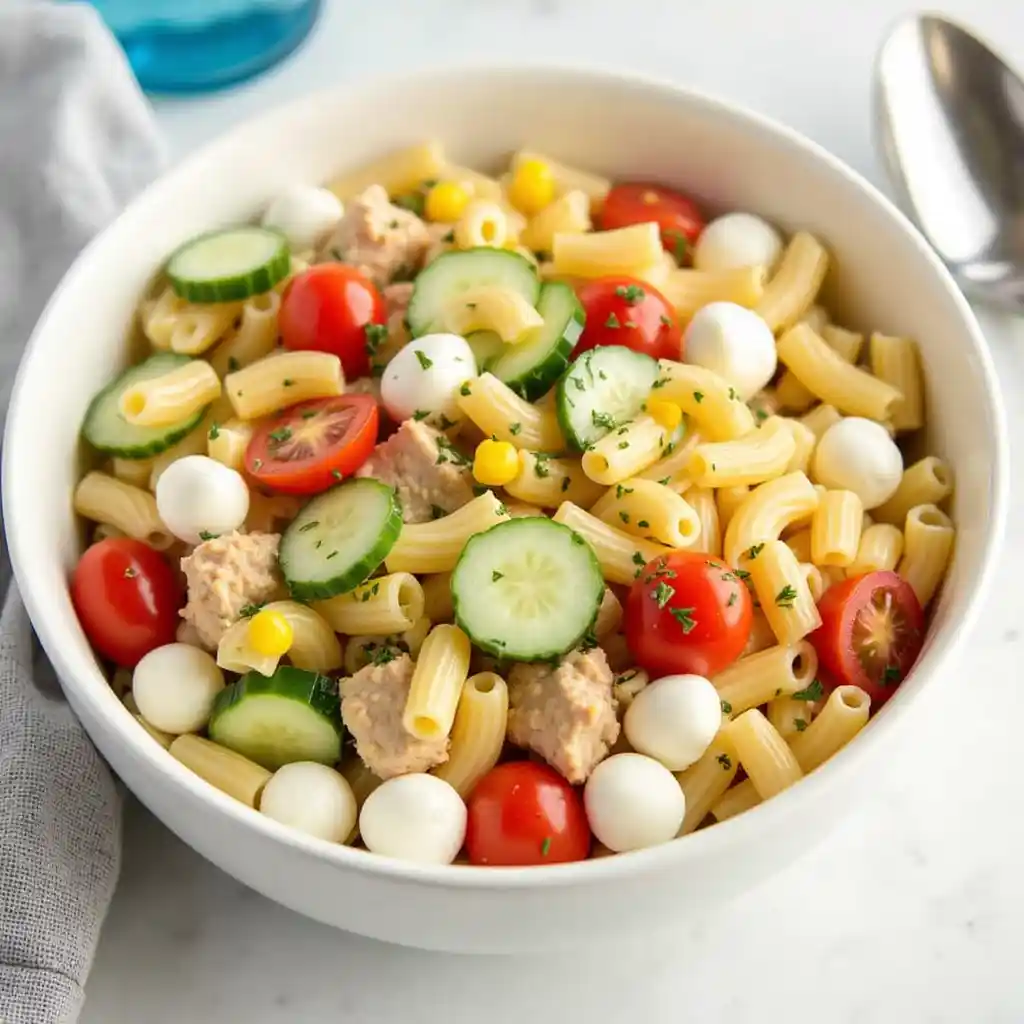
Key Ingredients:
- Pasta (whole wheat or gluten-free options): A base that cooks quickly and offers a satisfying texture.
- Vegetables: Cherry tomatoes, cucumbers, bell peppers, or peas are all easy to chop and pack with nutrients.
- Protein: Add chicken, turkey, or beans for a protein boost, or opt for a vegetarian version with cheese or tofu.
- Dressing: A simple olive oil-based vinaigrette or a creamy yogurt dressing works well for a quick fix.
Preparation:
- Cook the pasta according to package instructions (usually 7-10 minutes).
- While the pasta is cooking, chop the vegetables into bite-sized pieces.
- In a large bowl, combine the pasta, vegetables, and any protein.
- Drizzle with your choice of dressing and toss to combine.
- Serve immediately or refrigerate for a chilled salad.
Recipe Idea: For a Mediterranean twist, combine whole wheat pasta with diced cucumber, cherry tomatoes, kalamata olives, feta cheese, and a drizzle of olive oil, lemon juice, and oregano. This dish can be served as a light lunch or a side dish to a more substantial dinner.
| Ingredient | Possible Variations |
|---|---|
| Pasta | Whole wheat, gluten-free, or spiralized zucchini |
| Vegetables | Tomatoes, cucumbers, bell peppers, spinach |
| Protein | Chicken, tuna, chickpeas, hard-boiled eggs |
| Dressing | Olive oil and lemon, ranch, or yogurt-based |
Egg-Based Options: Omelets, Muffins, and Frittatas
Eggs are a fantastic source of protein and can be prepared in a variety of ways to suit busy schedules. From quick omelets to make-ahead frittatas, eggs offer an easy and nutritious solution that can be tailored to individual tastes. Whether served for breakfast, lunch, or dinner, egg-based meals are both satisfying and versatile.
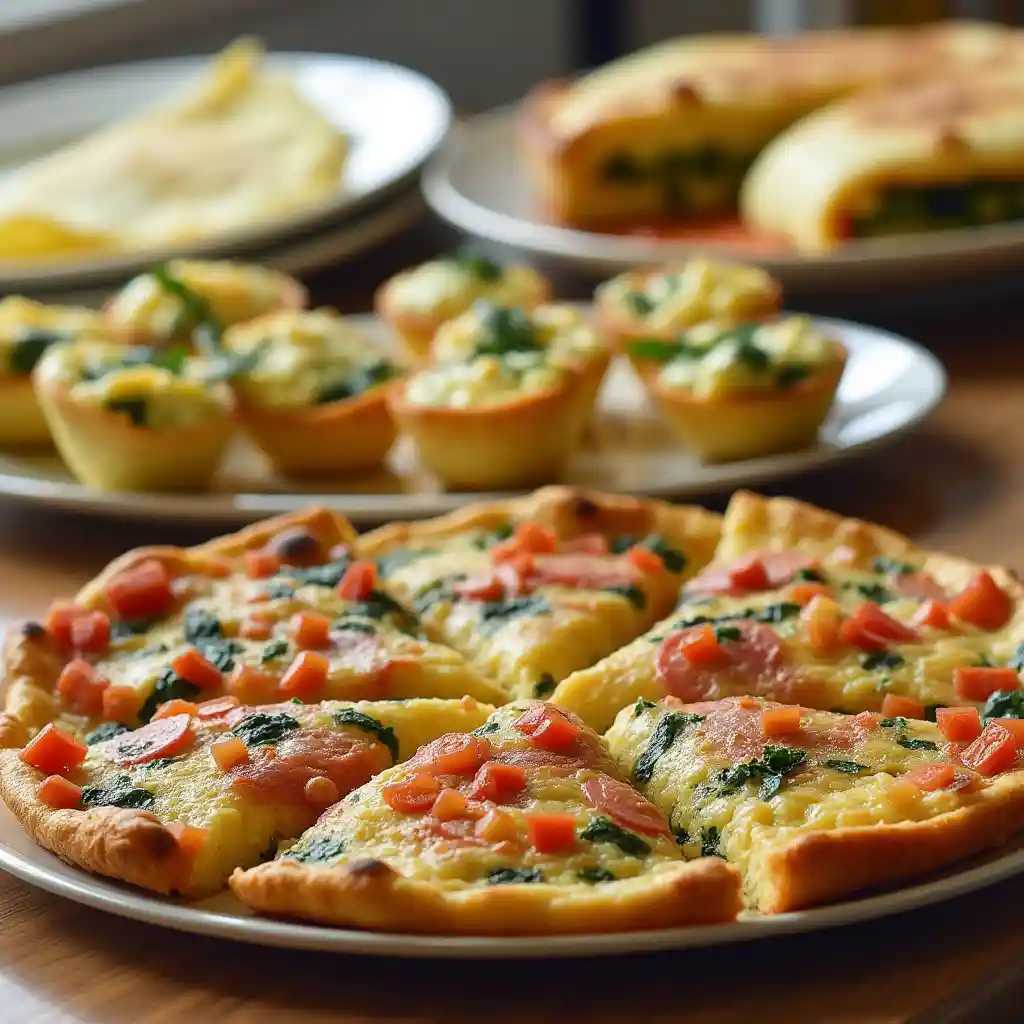
Quick and Easy Omelets: Omelets are one of the fastest meals to prepare, and they can be loaded with vegetables, cheese, and protein for a well-rounded dish. They take just minutes to cook and are a great way to use up leftover veggies or meats.
Preparation:
- Beat 2-3 eggs in a bowl and season with salt and pepper.
- Heat a non-stick pan over medium heat and add a little olive oil or butter.
- Pour in the eggs, swirling the pan to ensure they coat the bottom evenly.
- Once the eggs begin to set, add your choice of fillings (cheese, spinach, mushrooms, ham, etc.).
- Fold the omelet in half and cook until the cheese melts and the eggs are fully set.
Mini Egg Muffins: For an easy-to-serve breakfast or lunch, mini egg muffins are a fantastic choice. These bite-sized creations are perfect for kids and can be stored in the fridge for up to a week. Plus, they’re ideal for sneaking in some veggies.
Preparation:
- Preheat your oven to 350°F (175°C).
- Grease a muffin tin or line with paper cups.
- Whisk together 6 eggs, a splash of milk, salt, and pepper.
- Add in chopped veggies like spinach, peppers, and onions, along with cheese or cooked bacon if desired.
- Pour the egg mixture into the muffin tin and bake for 15-20 minutes or until set.
Frittatas for a Family Feast: A frittata is essentially a crustless quiche, and it’s another great egg-based dish that’s easy to make and can be eaten at any time of the day. It’s perfect for breakfast or as a hearty lunch when paired with a side salad.
Preparation:
- Preheat the oven to 375°F (190°C).
- Sauté any desired vegetables in a skillet until softened (e.g., zucchini, onions, spinach).
- In a bowl, whisk together 6-8 eggs, salt, and pepper, and pour over the cooked vegetables.
- Sprinkle cheese and additional seasonings of choice (like herbs) on top.
- Cook the frittata on the stove for a few minutes, then transfer to the oven to finish cooking, about 10-15 minutes.
| Dish | Key Ingredients | Preparation Time |
|---|---|---|
| Omelets | Eggs, veggies, cheese, meats | 5-7 minutes |
| Mini Muffins | Eggs, milk, veggies, cheese | 15-20 minutes |
| Frittatas | Eggs, vegetables, cheese, herbs | 20-25 minutes |
Leftover Reinventions: Easy Ways to Use What’s on Hand
Leftovers often get a bad reputation, but they can be transformed into new and exciting meals with just a little creativity. Not only does this save time and reduce food waste, but it also ensures you have a delicious and nutritious meal ready in minutes. Here are a few ways to reinvent your leftovers for a fresh meal.
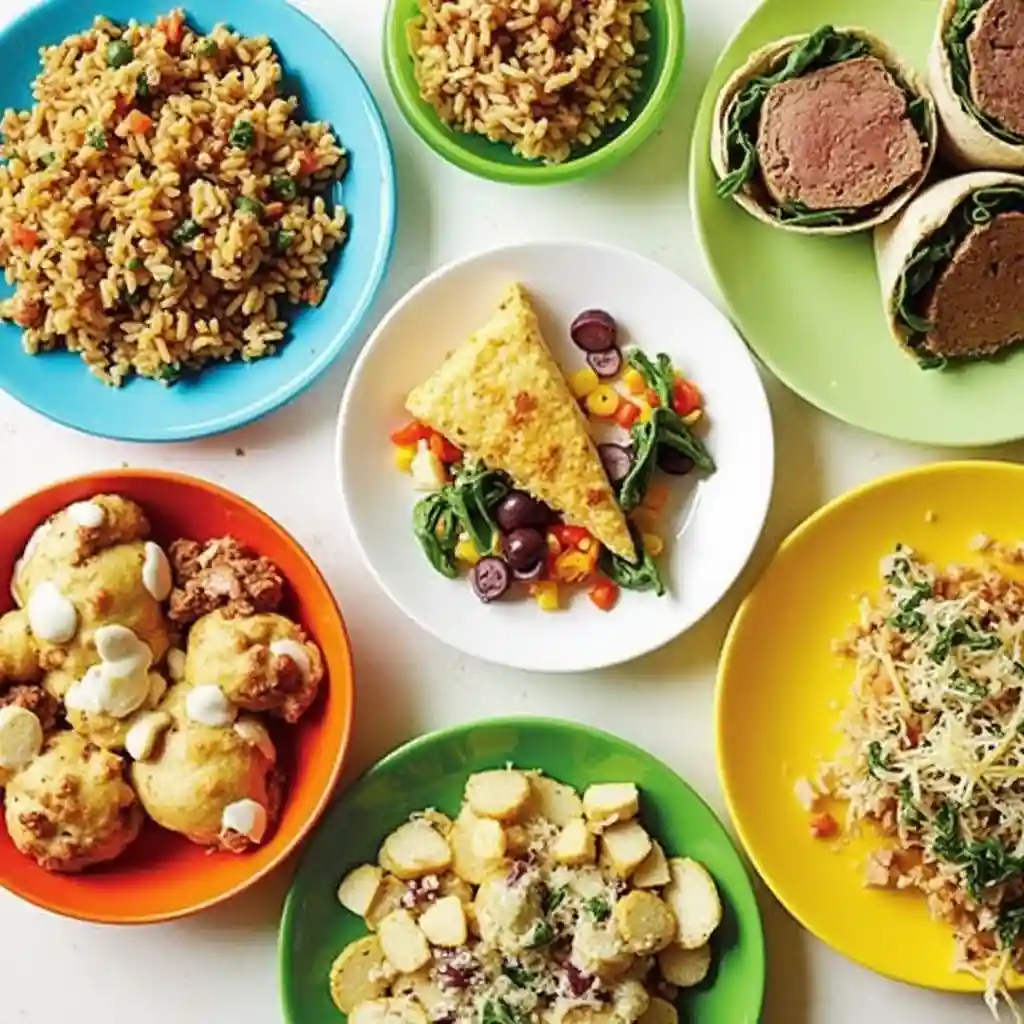
Leftover Chicken: Turn yesterday’s roasted chicken into a quick chicken salad or wrap. Simply shred the meat and mix it with fresh veggies, some mayo or yogurt, and your favorite seasonings. You can add this to a sandwich, wrap it in a tortilla, or serve over a bed of greens for a quick and satisfying meal.
Leftover Vegetables: Leftover roasted vegetables can be turned into a quick stir-fry or added to a grain bowl with quinoa or rice. Toss them with a bit of olive oil, garlic, and your favorite spices, and you’ll have a flavorful dish in minutes.
Rice-Based Dishes: If you have leftover rice, it can be easily transformed into a savory fried rice or rice salad. Simply sauté the rice with vegetables, eggs, and a splash of soy sauce for an instant meal. Add any leftover meat or tofu for a protein boost.
| Leftover Type | New Dish Ideas | Preparation Time |
|---|---|---|
| Leftover Chicken | Chicken salad, wraps, soups | 5-10 minutes |
| Leftover Vegetables | Stir-fry, grain bowl, vegetable fritters | 5-10 minutes |
| Leftover Rice | Fried rice, rice salad, rice bowls | 5-10 minutes |
Recipe Cards or Printables
For readers who love to try new recipes, providing downloadable recipe cards or printables can be a helpful addition. These cards can outline the simple steps and ingredients for each of the dishes mentioned above, making it easy for your audience to follow and recreate these quick meals. Offering them as printables also allows readers to keep them handy for busy days.
Balancing Treats and Healthy Options
Finding the perfect balance between indulgence and nourishment is not just about reducing unhealthy snacks, but also about discovering creative ways to make wholesome foods just as satisfying. By transforming ordinary treats into healthy, flavorful options, you can indulge your cravings while keeping your body nourished. Whether you’re looking for sweet snacks, baked goods, or dips that are both delicious and nutritious, there are countless ways to make this balance work in your favor. Below, we explore how you can blend indulgent treats with healthy choices without sacrificing flavor or enjoyment.
Sweet Snacks That Are Nutritious: Yogurt Parfaits and Fruit Skewers
When it comes to satisfying a sweet tooth, traditional sugary snacks often lead to an energy crash and lack nutritional benefits. But with a little creativity, you can easily replace those sugary snacks with options that are not only healthy but also delicious. Yogurt parfaits and fruit skewers are excellent examples of sweet treats that are both nutritious and enjoyable.
Yogurt Parfaits:
Yogurt parfaits are a versatile and customizable treat. The base of Greek yogurt offers a rich source of protein, which helps to keep you full and energized throughout the day. Greek yogurt is also packed with probiotics, which contribute to a healthy gut. To turn your parfait into a complete, nutrient-packed snack, layer it with a variety of colorful fruits like berries, bananas, or kiwi, which are high in antioxidants and vitamins. Adding nuts, seeds, or granola to the mix adds a satisfying crunch while delivering fiber and healthy fats. This combination creates a balanced snack that satisfies your sweet cravings while providing a host of health benefits.
Preparation:
- Layer a cup with Greek yogurt as the base.
- Add a generous helping of fresh fruit—think blueberries, strawberries, or peaches.
- Top with a sprinkle of granola or nuts for added texture and nutritional value.
Fruit Skewers:
Fruit skewers are another fantastic way to enjoy something sweet without resorting to refined sugar. By choosing a variety of fresh, seasonal fruits, you can create a vibrant snack that is not only delicious but also packed with vitamins, minerals, and fiber. These easy-to-prepare skewers can be enjoyed as a quick snack, an addition to a meal, or even as a fun party treat. Choose fruits that are high in water content, like watermelon, oranges, and strawberries, to help keep you hydrated.
Preparation:
- Choose an assortment of colorful fruits like pineapple, grapes, melon, and strawberries.
- Cut the fruits into bite-sized pieces and arrange them on skewers.
- Serve with a drizzle of honey or a dusting of cinnamon for a little extra flavor.
These sweet snacks not only curb your sugar cravings but also provide essential nutrients, making them the perfect combination of taste and health.
Incorporating Whole Grains into Baked Goods
Baked goods are a comforting part of many diets, but traditional recipes often rely on refined white flour and excessive sugar. While these treats can be tasty, they lack the nutritional density that whole grains offer. By swapping in whole grain ingredients, you can easily transform your favorite baked goods into healthier alternatives, offering added fiber, vitamins, and minerals without sacrificing taste.
Whole Grain Flours:
The first step in transforming your baked goods is to replace refined flours with whole grain options. Whole wheat flour, spelt flour, and oat flour are excellent alternatives that retain the grain’s bran and germ, offering more fiber and nutrients. By using these whole grain flours, you increase the fiber content of your baked goods, helping to keep you fuller for longer and supporting healthy digestion.
Healthy Baked Goods:
Whole grain flours work well in most baked goods. Whether you’re making muffins, cookies, or bread, substituting part or all of the refined flour with whole wheat flour enhances the flavor and nutritional value. Whole grain baked goods can be just as fluffy and delicious as their refined counterparts, and they often provide a more complex flavor profile. You can also reduce the sugar content by using natural sweeteners such as maple syrup, honey, or mashed bananas, which will keep the sweetness intact while providing added nutrients.
Recipe Idea:
Whole wheat blueberry muffins are a fantastic choice. Replace half of the white flour with whole wheat flour and add fresh blueberries, which are packed with antioxidants. For extra fiber and omega-3s, sprinkle in some chia seeds or flaxseeds.
Healthy Dips and Spreads for Added Flavor
Dips and spreads are not only great for adding flavor to meals but also serve as an excellent opportunity to introduce more nutritious ingredients into your diet. Whether you’re hosting a gathering or preparing a quick snack, healthy dips can complement a variety of fresh vegetables, whole grain crackers, or even fruit. These flavorful spreads can be made using nutrient-rich ingredients like avocados, beans, and Greek yogurt, providing a tasty and satisfying alternative to heavier, calorie-dense options.
Hummus and Guacamole:
Hummus is a classic dip made from chickpeas, tahini, olive oil, and lemon juice. It’s rich in protein and healthy fats, making it an excellent choice for a nutritious snack. Pair it with raw veggies like carrots, cucumber, and bell peppers, and you’ll have a wholesome, satisfying snack. Guacamole, made primarily from avocados, offers a heart-healthy dose of monounsaturated fats. The addition of lime juice, tomatoes, and cilantro creates a fresh, flavorful dip that’s perfect for pairing with whole grain chips or vegetable sticks.
Preparation for Hummus:
- Blend canned chickpeas with tahini, olive oil, lemon juice, and garlic in a food processor.
- Season with cumin, paprika, or other spices to enhance the flavor.
- Serve with veggies like celery, cucumber, or carrot sticks.
Preparation for Guacamole:
- Mash ripe avocados and mix with diced tomatoes, onions, cilantro, and lime juice.
- Add salt and pepper to taste and serve with whole grain tortilla chips or vegetables.
Greek Yogurt Dip:
Greek yogurt can easily replace sour cream or mayonnaise-based dips. It’s rich in protein and calcium, and its tangy flavor complements a variety of herbs and spices. A simple Greek yogurt dip can be made by mixing yogurt with garlic, dill, and lemon juice, creating a creamy and flavorful dip that pairs perfectly with crunchy vegetables or whole grain crackers.
Preparation:
- Combine Greek yogurt with garlic powder, dill, and lemon juice.
- Add salt and pepper to taste.
- Serve with fresh vegetables like carrot sticks, bell peppers, or cucumbers.
Tips for Planning Ahead
Planning ahead is a game-changer for busy families, ensuring nutritious lunches are always within reach. By meal prepping, stocking a pantry with versatile ingredients, and rotating menus, you can simplify mealtime without sacrificing nutrition or flavor.
Meal Prepping Essentials for Busy Families
Meal prepping saves time and reduces stress. Batch cooking core ingredients like grilled chicken or roasted vegetables allows for quick assembly throughout the week. Pre-portioned snacks and mason jar salads can make lunch hassle-free and ensure healthy choices are always available.
Stocking a Pantry for Quick Lunch Solutions
Keep pantry staples like canned vegetables, whole grains, and tinned tuna on hand for easy lunch options. These ingredients are shelf-stable and nutritious, enabling quick and satisfying meals when time is tight.
Rotating Menus to Keep Lunches Exciting
Avoid lunchtime monotony by rotating your meals. Plan weekly menus with varied meals like wraps, grain bowls, and salads. Incorporating themed lunches or using leftovers creatively ensures meals remain exciting and nutritious.
By preparing in advance, busy families can enjoy quick, healthy lunches every day with minimal stress.
FAQs:
What is a good quick lunch for fussy eaters?
A great quick lunch for fussy eaters is a DIY lunch box. Fill it with a variety of easy-to-eat items like cheese cubes, deli meats, crackers, fruit slices, and a small portion of a dip like ranch or hummus. You can also try mini wraps, where you roll up a tortilla with simple ingredients such as turkey, cheese, and a little mayo or hummus. For a more creative option, fruit and yogurt parfaits layered with granola can be a hit, offering both a sweet and nutritious choice. These lunches are simple, customizable, and allow kids to pick and choose what they like, making mealtime more enjoyable for picky eaters.
What is a good quick lunch for fussy eaters?
A great quick lunch for fussy eaters is a mini quesadilla. Simply take a tortilla, sprinkle some cheese, add a protein like chicken or beans, fold it in half, and microwave it for a few seconds until the cheese melts. You can also make a veggie and cheese sandwich with whole-grain bread, cream cheese, or hummus spread, and add simple veggies like cucumbers or lettuce. If they’re not keen on veggies, try offering a fruit and cheese plate with a side of crackers. These options are easy to assemble, customizable, and offer a good balance of flavors that are likely to appeal to even the pickiest eaters.
What is an easy no-cook lunch for picky eaters?
An easy no-cook lunch for picky eaters can be both fun and nutritious. One simple option is a build-your-own wrap. Provide a variety of fillings, such as deli meats, cheese, hummus, and sliced vegetables like cucumber or carrots. Let your picky eater assemble their wrap with their preferred ingredients. You can also create a DIY snack box filled with bite-sized portions of fruits, crackers, cheese, and a small dip like ranch or guacamole. This allows them to mix and match flavors and textures while keeping the lunch fun and interactive. These no-cook options are quick, customizable, and great for ensuring picky eaters get a meal they enjoy without the need for cooking.
How to pack lunch for picky eaters?
Packing lunch for picky eaters involves offering a variety of familiar, enjoyable foods in a fun, appealing way. Quick lunch ideas for picky eaters to try today include creating visually exciting meals, such as sandwiches cut into fun shapes or wraps with their favorite ingredients. Mix in small portions of fruits, veggies, proteins, and whole grains to keep it balanced. Adding dips like hummus or yogurt can make veggies more enticing. Keep meals simple and easy to assemble, like mini-burgers or pasta salads, to ensure your picky eater stays satisfied and nourished.
Conclusion
Navigating the world of picky eaters can be a challenge, but with the right strategies in place, you can transform mealtime into an enjoyable and stress-free experience for both parents and kids. Encouraging adventurous eating, making lunchtime easier, and celebrating small victories are all essential components of creating positive mealtime habits.
Encouraging Adventurous Eating Over Time
Introducing new foods to picky eaters doesn’t happen overnight, but with patience and consistency, it’s entirely possible to broaden their palate. The key is to approach mealtime with a sense of fun and excitement, rather than pressure. Gradually incorporate new ingredients into familiar dishes. For example, mix vegetables into pasta or soups they already love. Over time, kids will become more open to trying new things as they experience the joy of discovering different flavors and textures. By maintaining a positive attitude and celebrating small victories, you can foster a sense of curiosity and adventurousness when it comes to food.
Making Lunchtime a Stress-Free and Enjoyable Experience
Lunchtime doesn’t need to be a source of stress for parents or children. One of the most effective ways to reduce mealtime tension is by preparing in advance. Meal prepping ensures that nutritious ingredients are always on hand, so you’re never scrambling to put together a meal. Additionally, creating interactive and engaging lunches, such as build-your-own wraps or bento boxes, can make the experience more enjoyable. This hands-on approach helps children feel involved in the process and gives them a sense of ownership over their meal choices. Making lunchtime fun encourages positive associations with food, turning it from a chore into a rewarding experience.
Celebrating Small Wins in Creating Meals They Love
Every successful meal, no matter how small, should be celebrated. Whether your child tries a new vegetable or finishes an entire plate of food, these moments should be acknowledged. Positive reinforcement not only boosts their confidence but also motivates them to continue exploring new foods. Take time to express pride in their willingness to try new things, and remember that each step forward is a victory. These small wins, accumulated over time, will pave the way for more adventurous eating and a healthier relationship with food. By maintaining a patient, celebratory approach, you’ll encourage children to embrace mealtimes and the variety they offer.
For inspiration on easy-to-make meals, check out this Ground Beef and Mashed Potatoes recipe for a simple, tasty dish that’s sure to appeal to picky eaters. For more creative meal ideas and tips, visit the Enjoy by Recipes YouTube channel for helpful video guides. With consistent effort, creativity, and a positive mindset, you’ll create an environment where mealtimes are stress-free, enjoyable, and full of flavor.





















